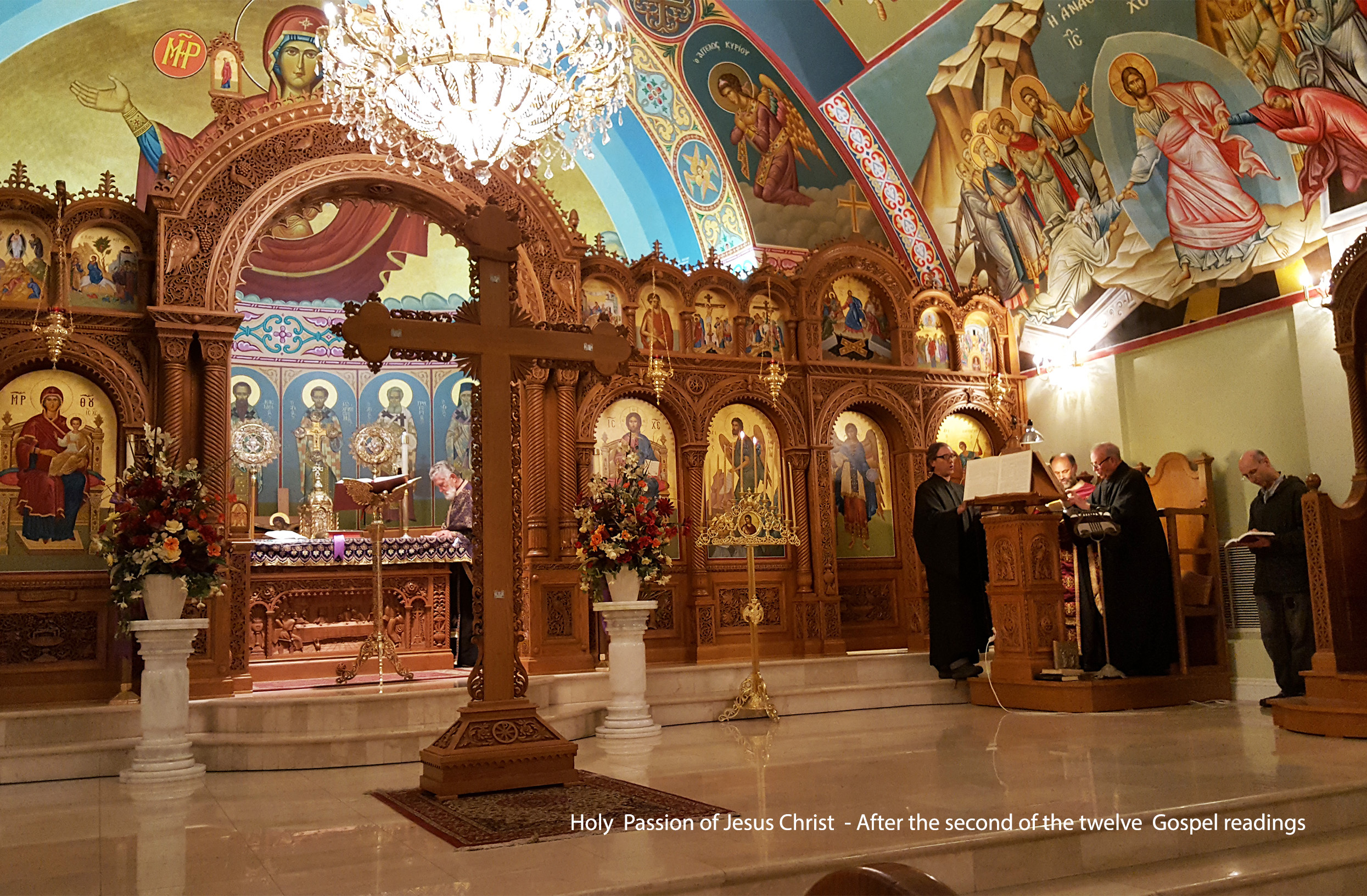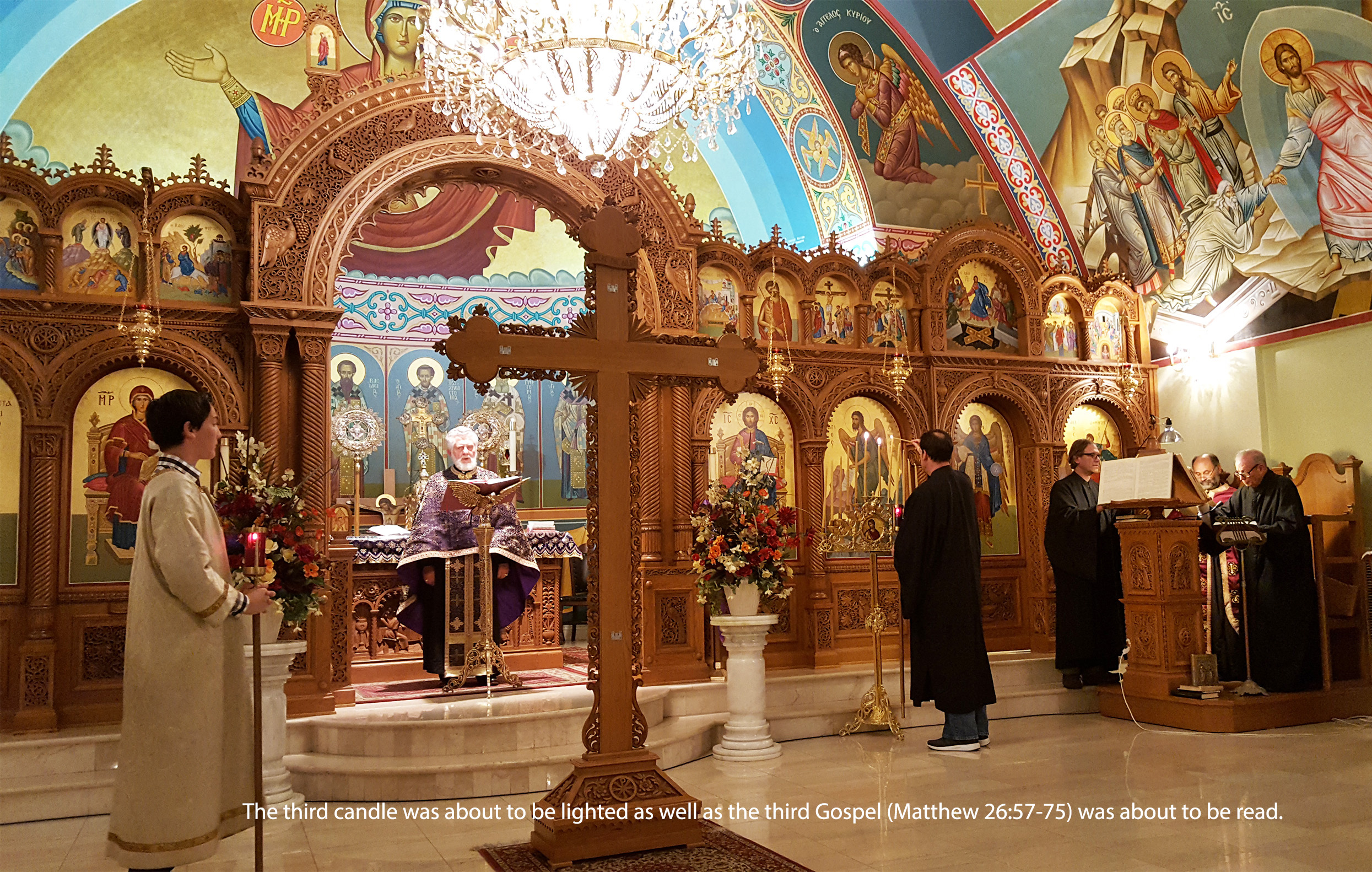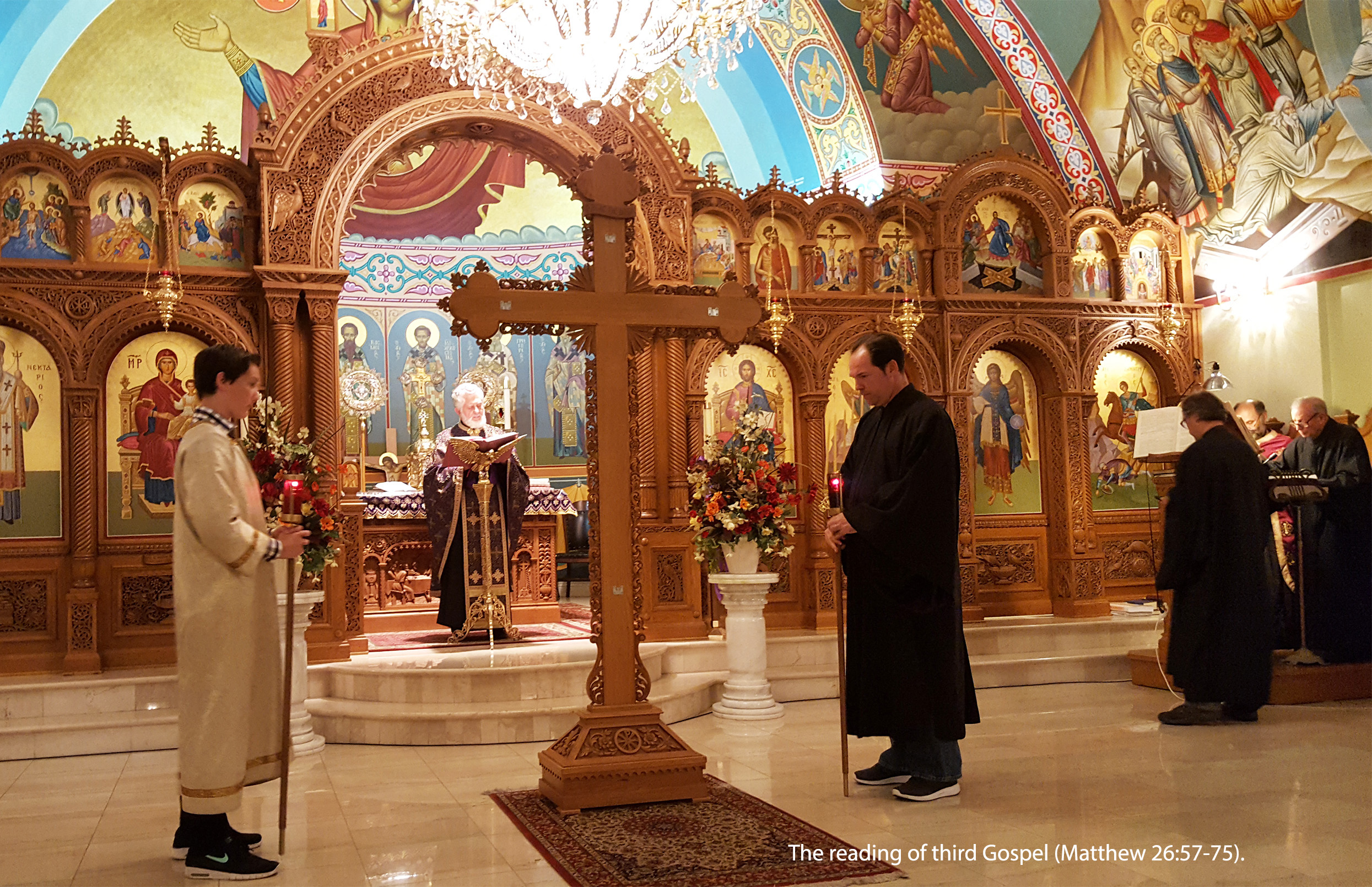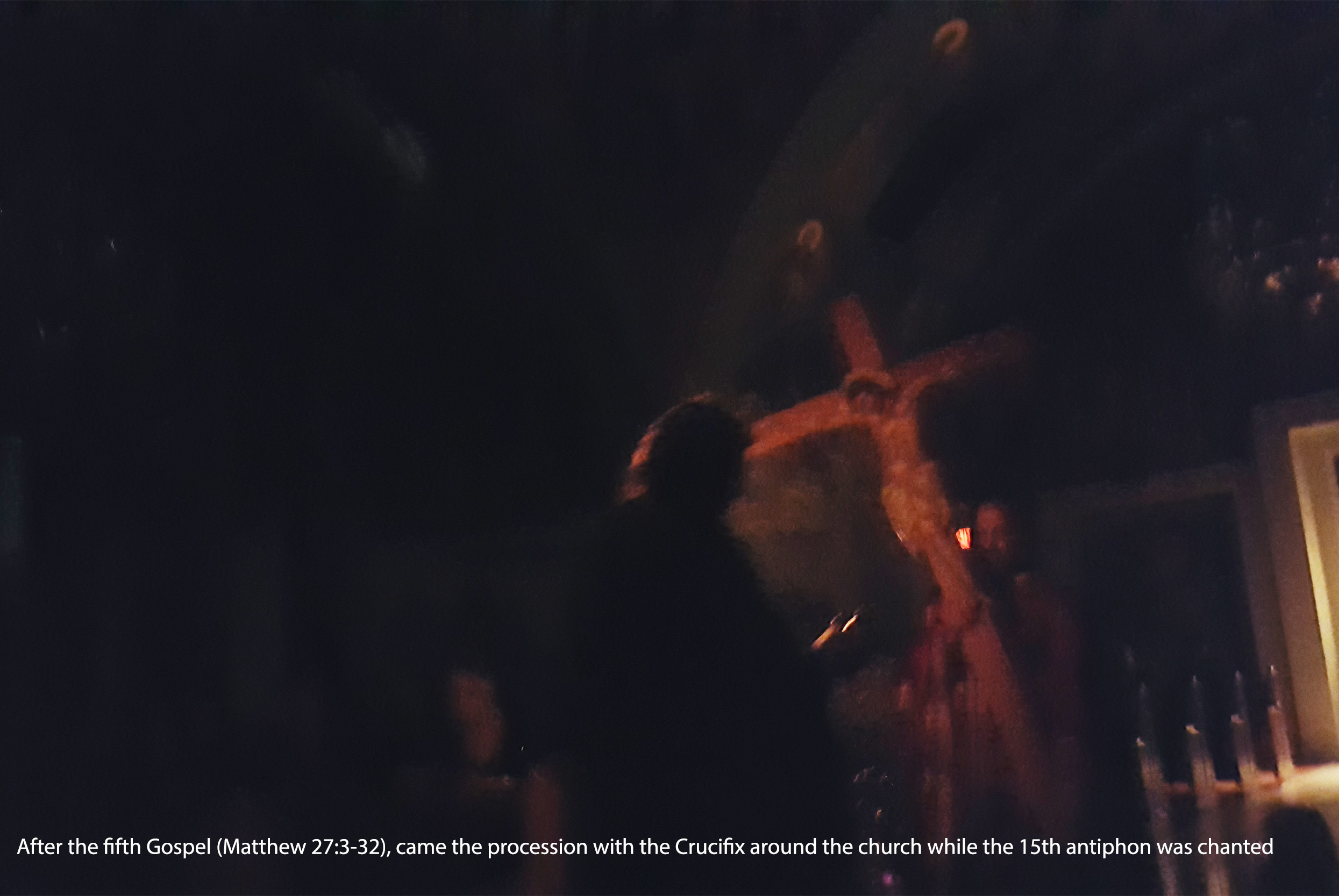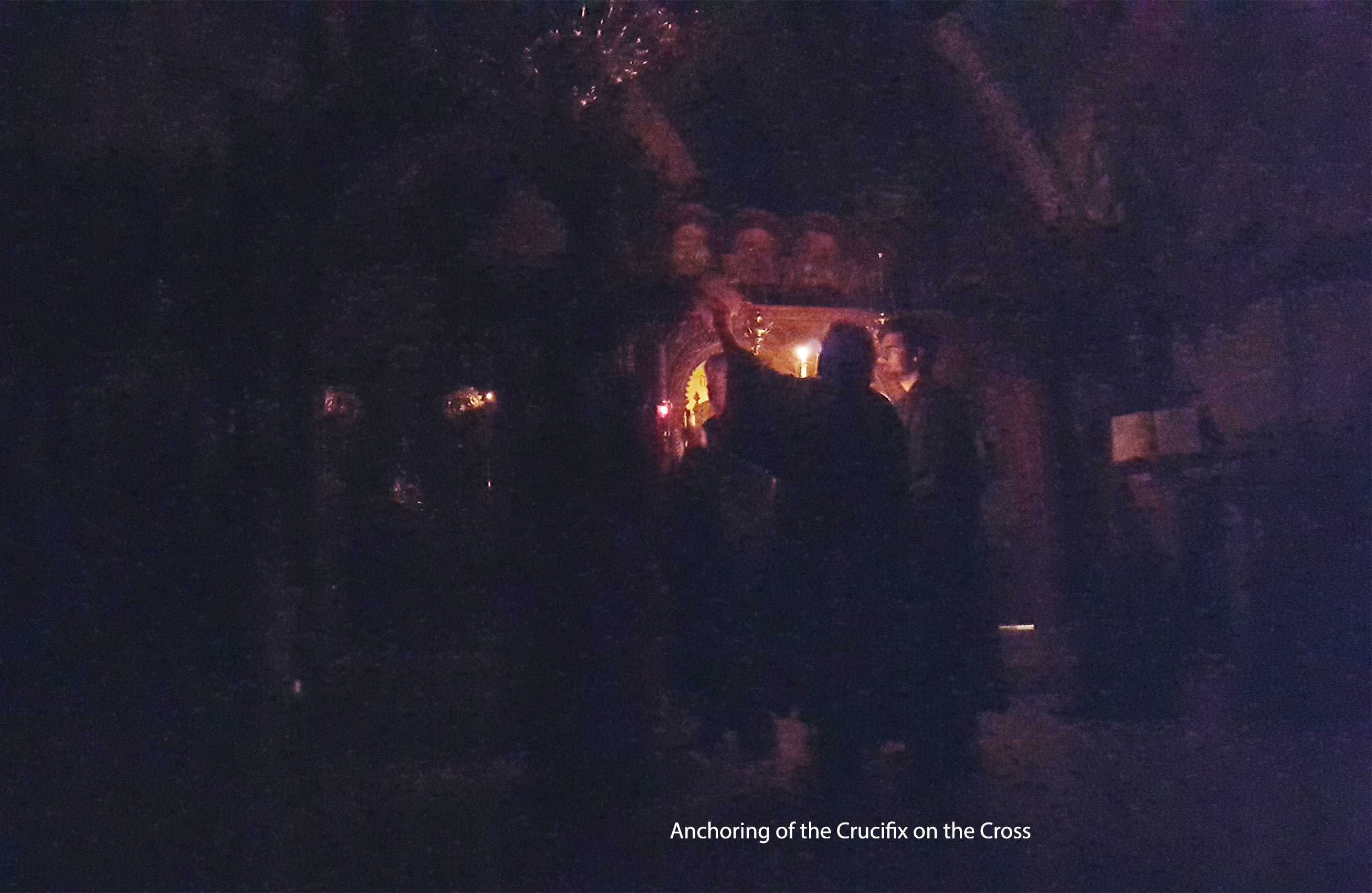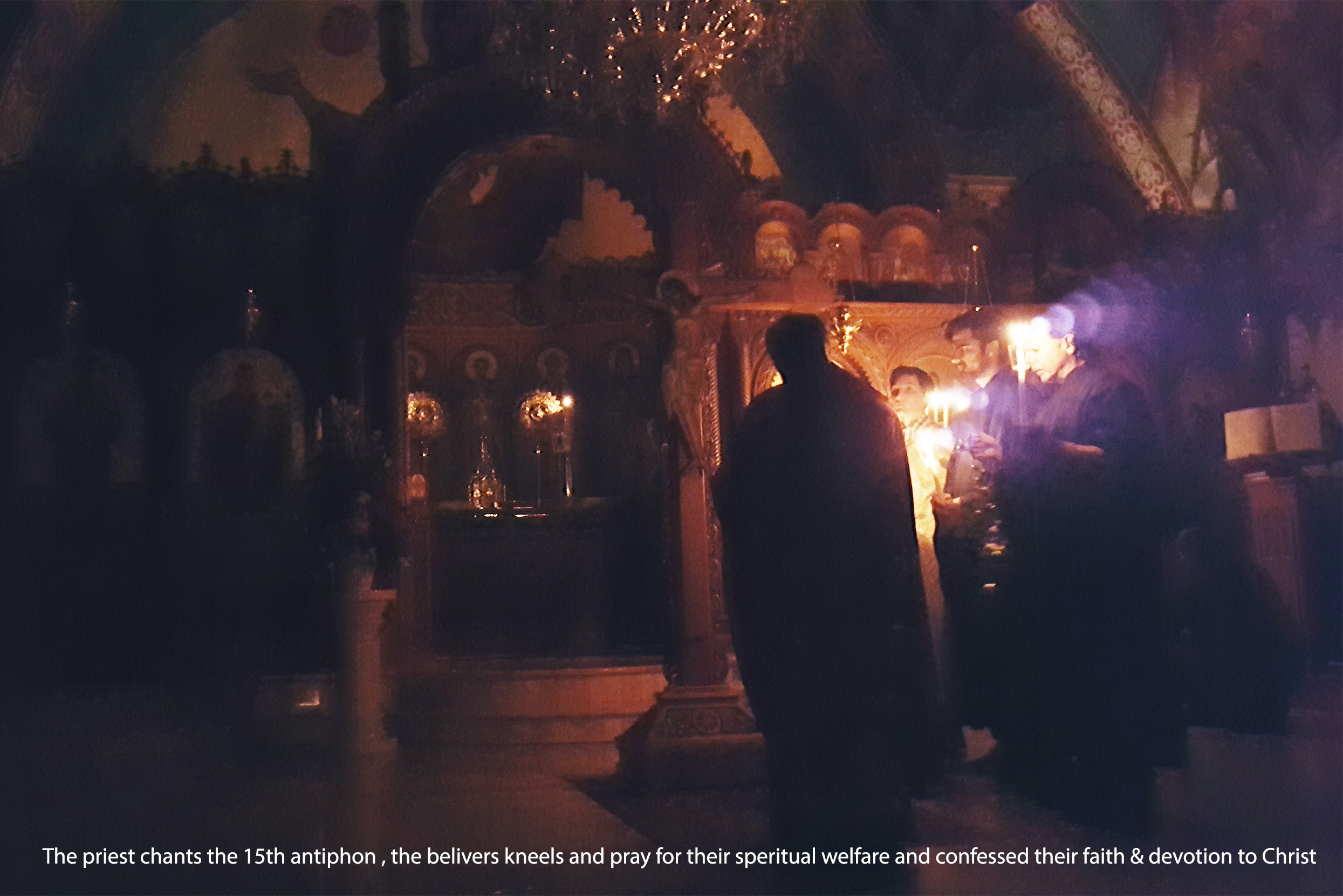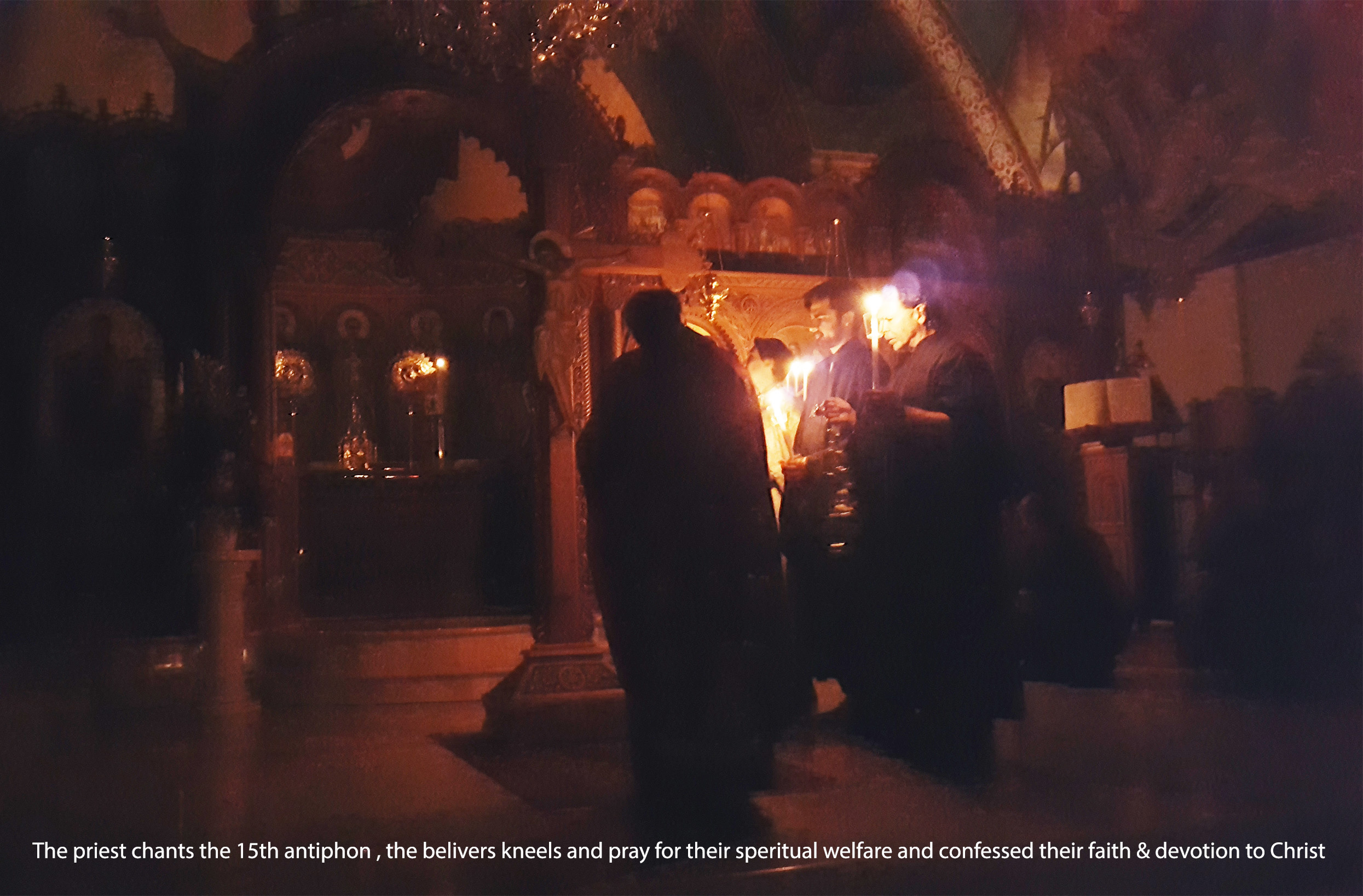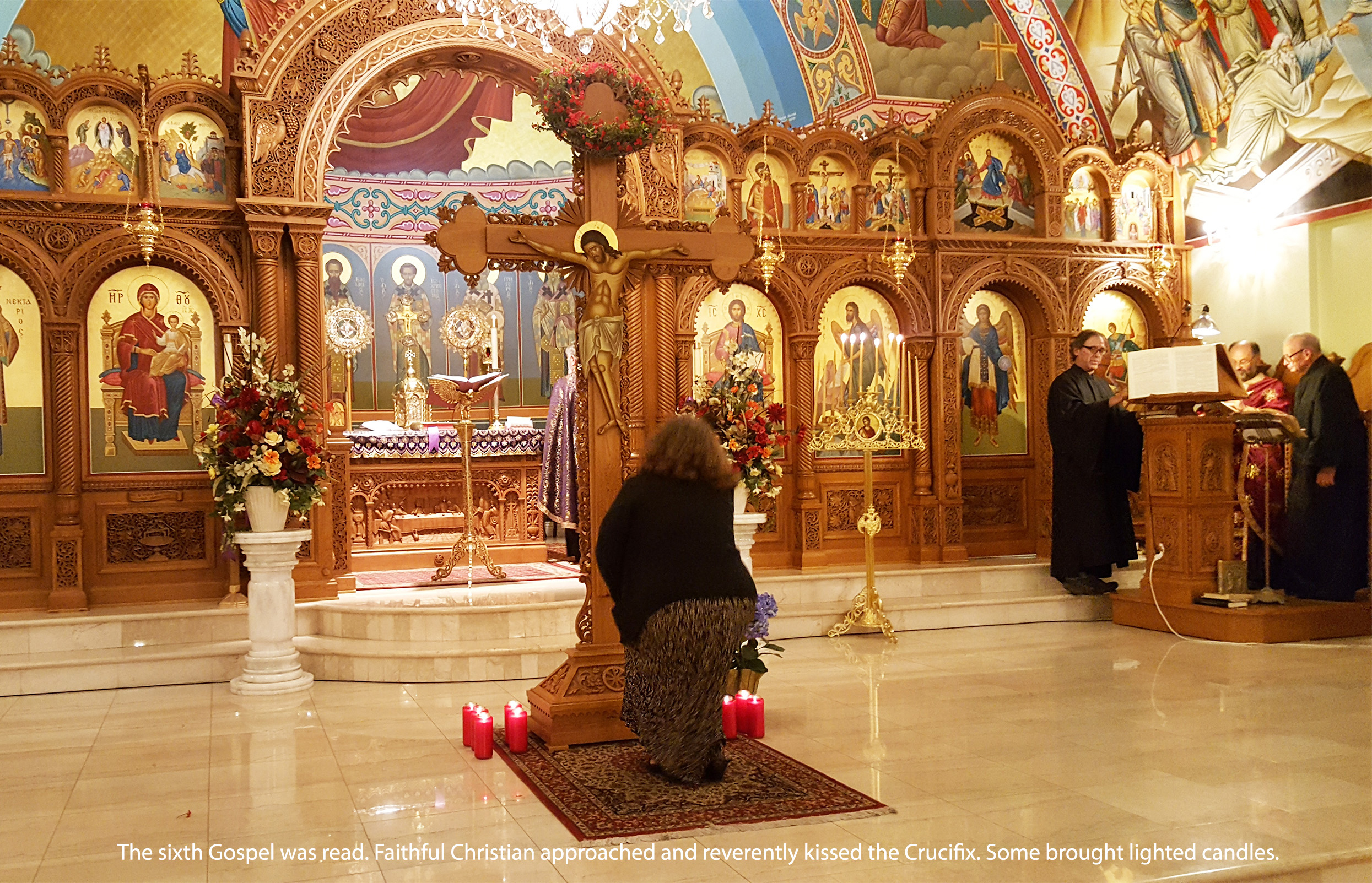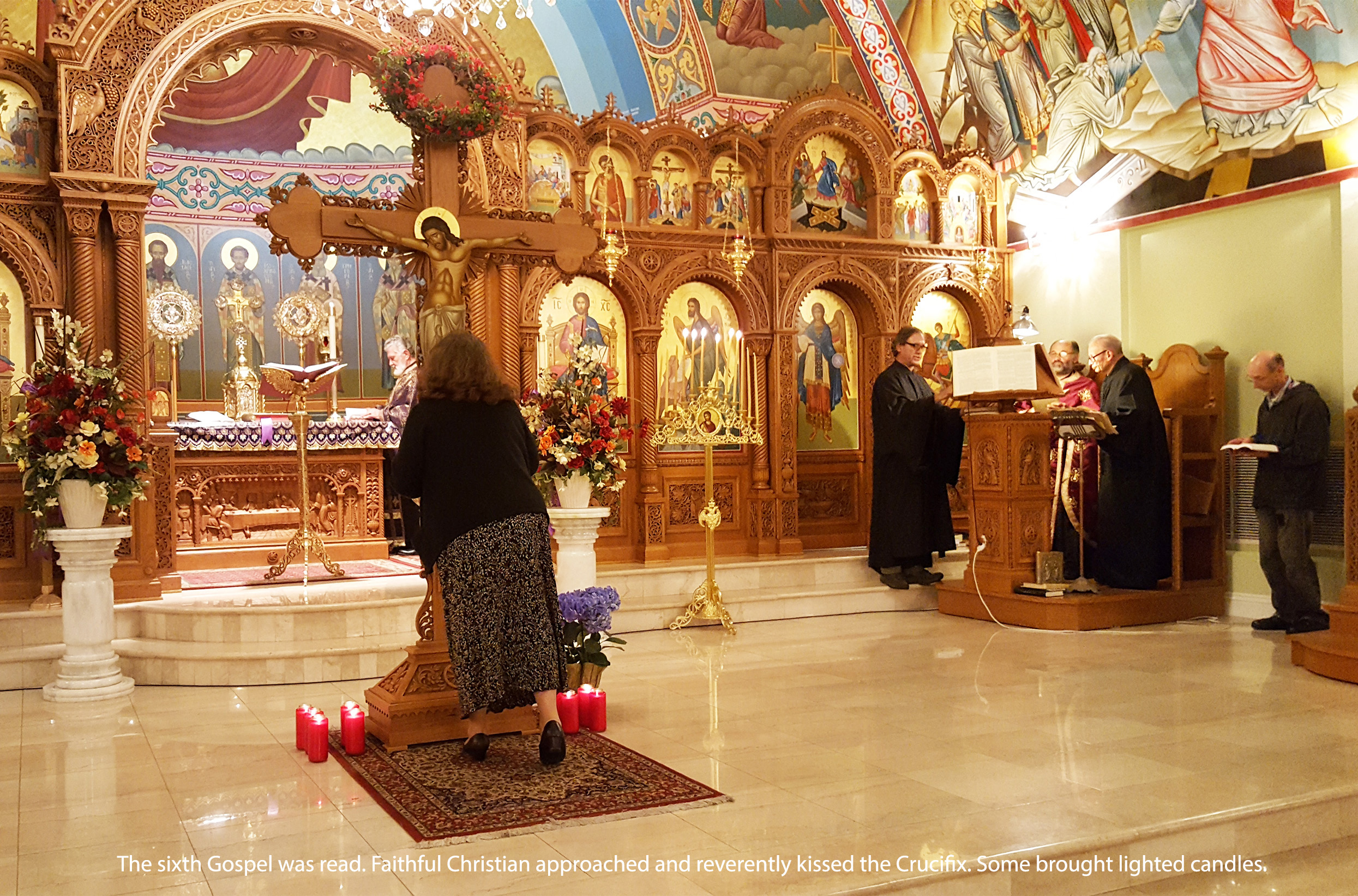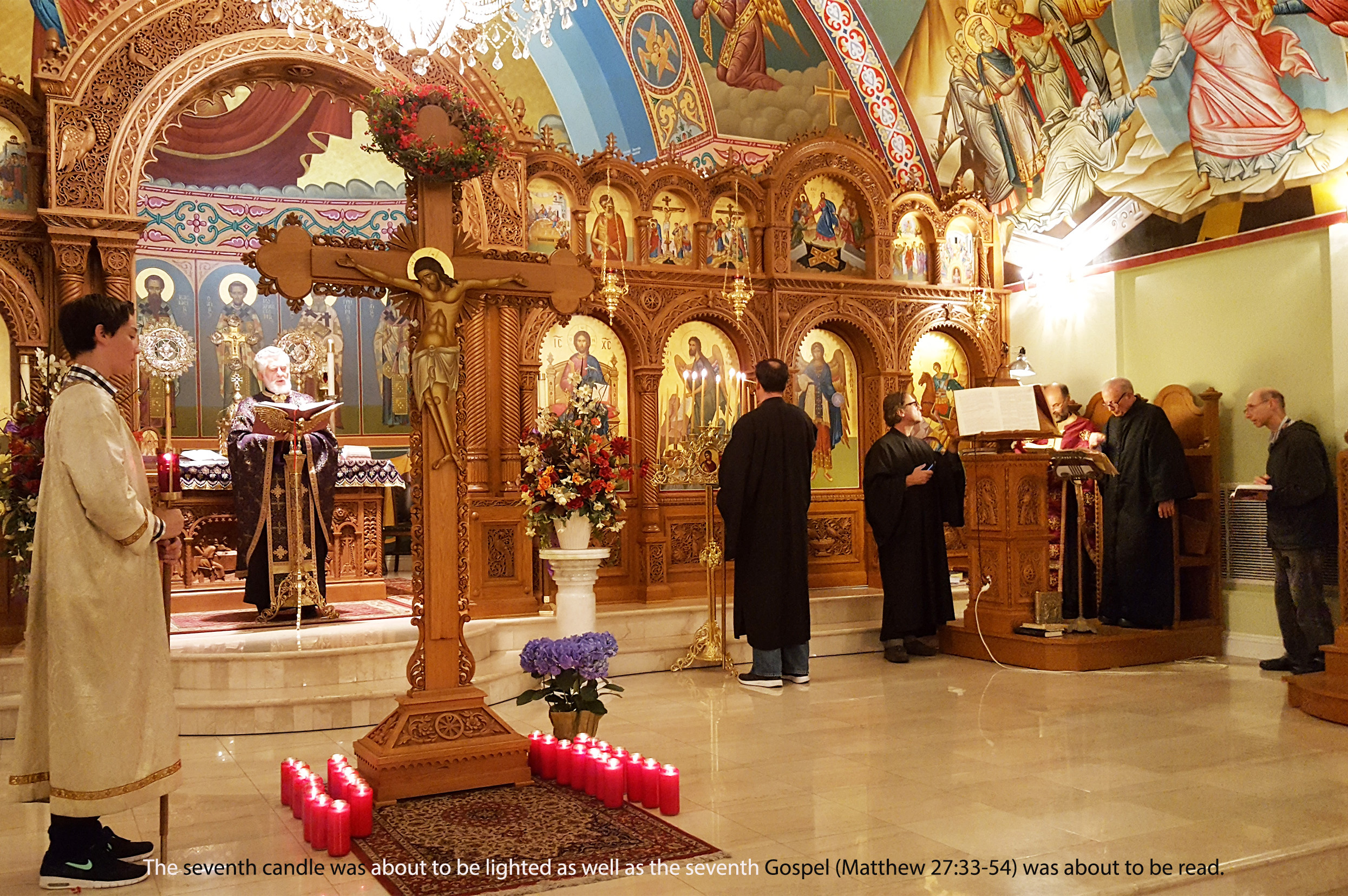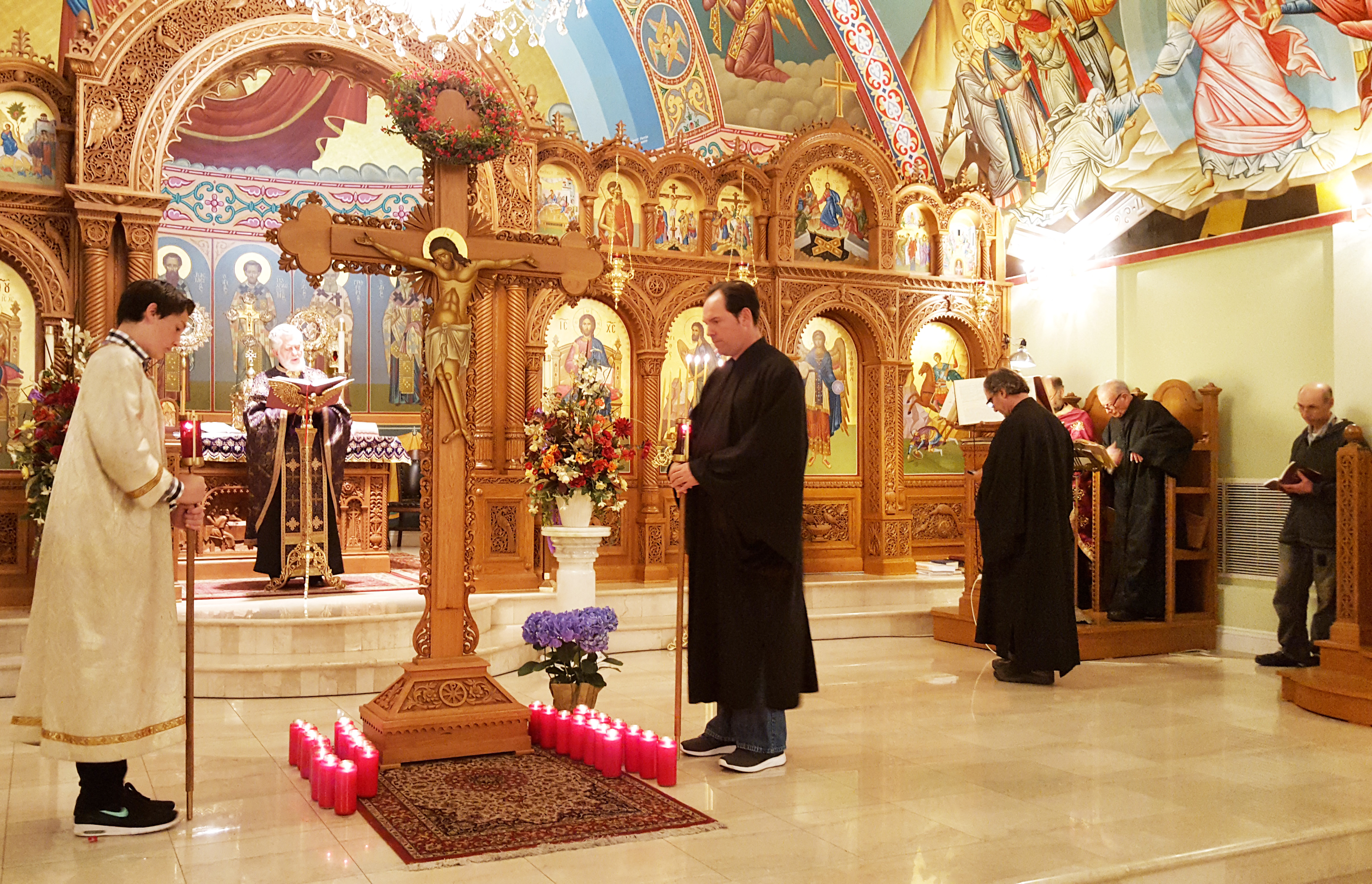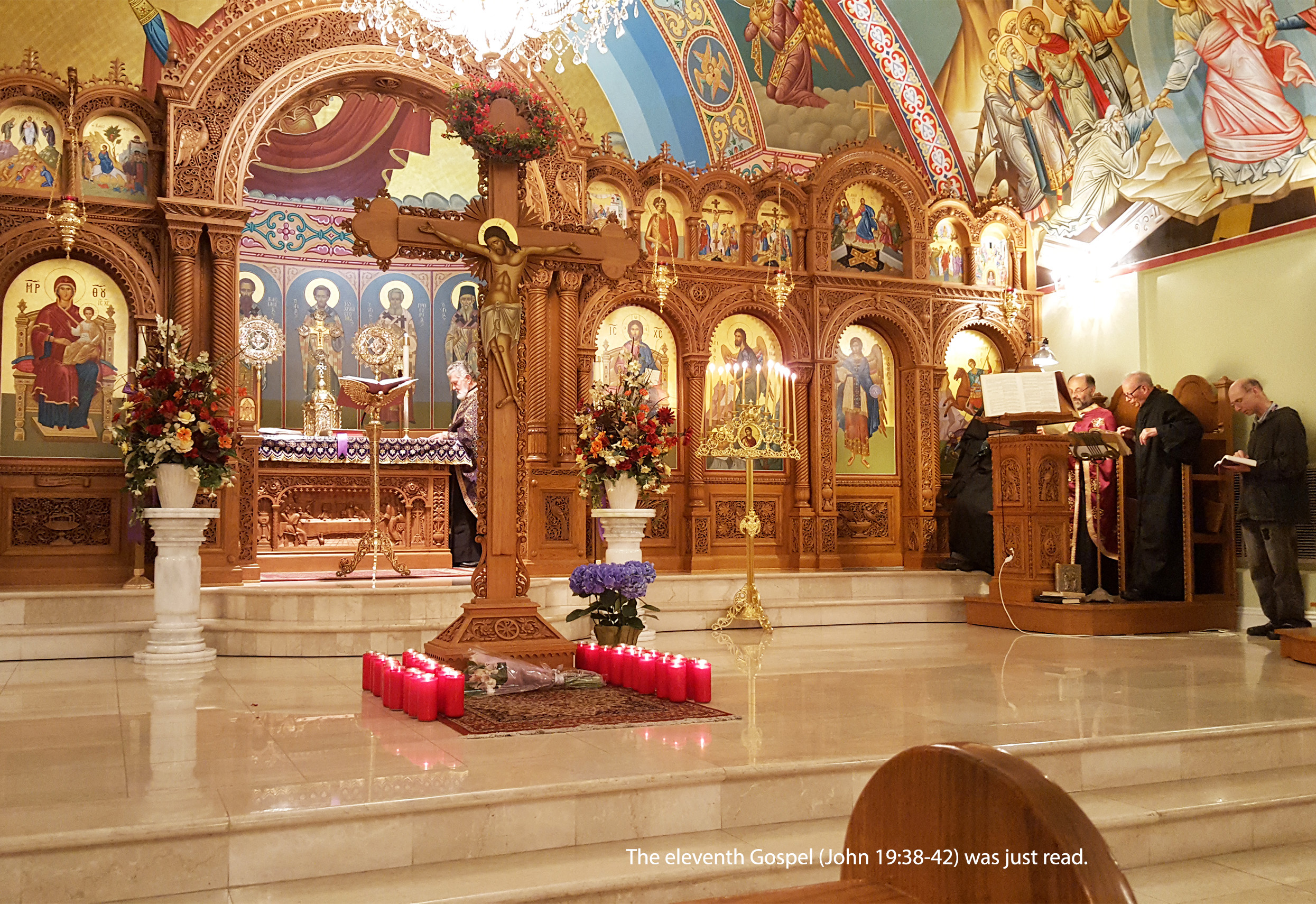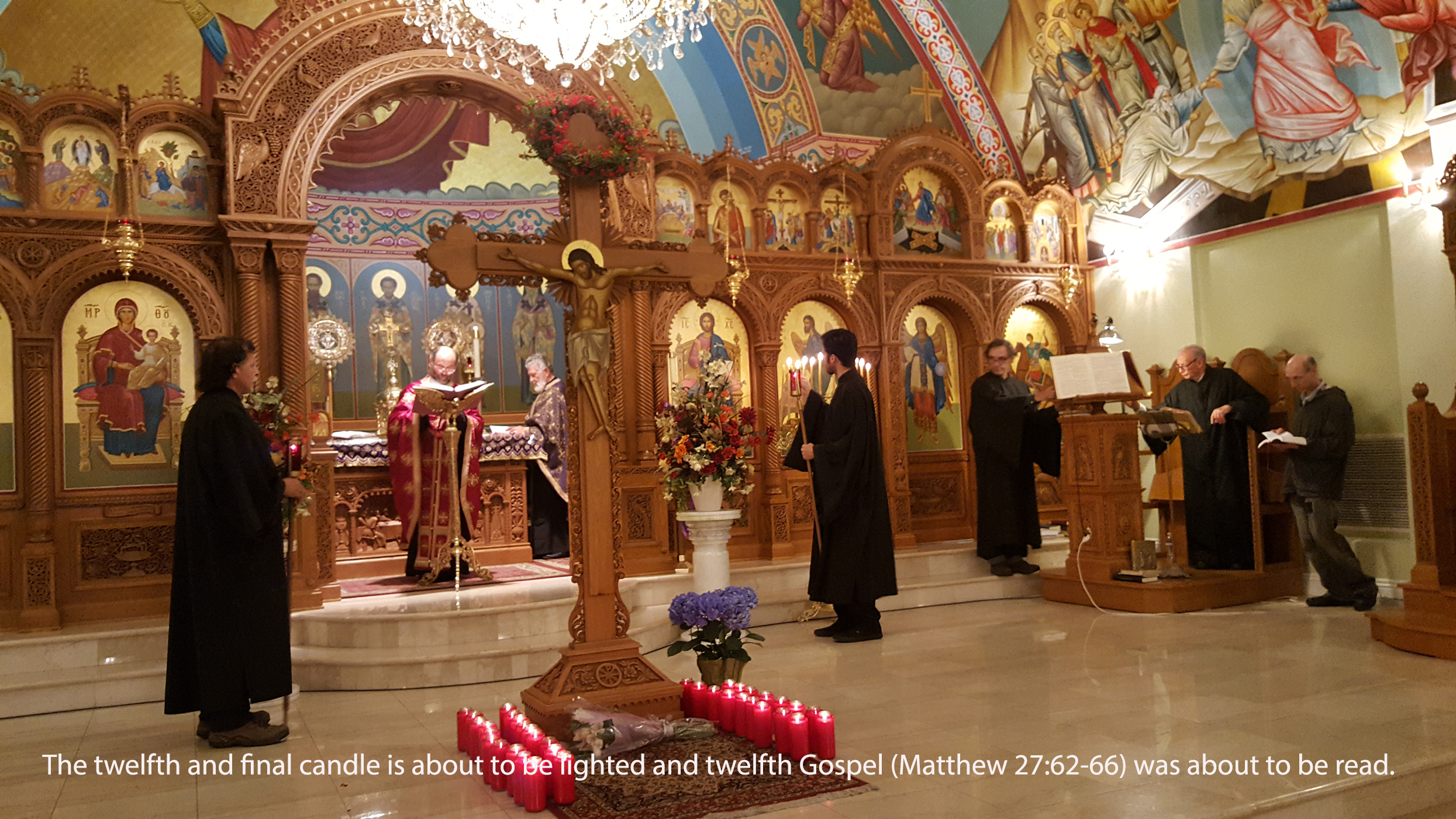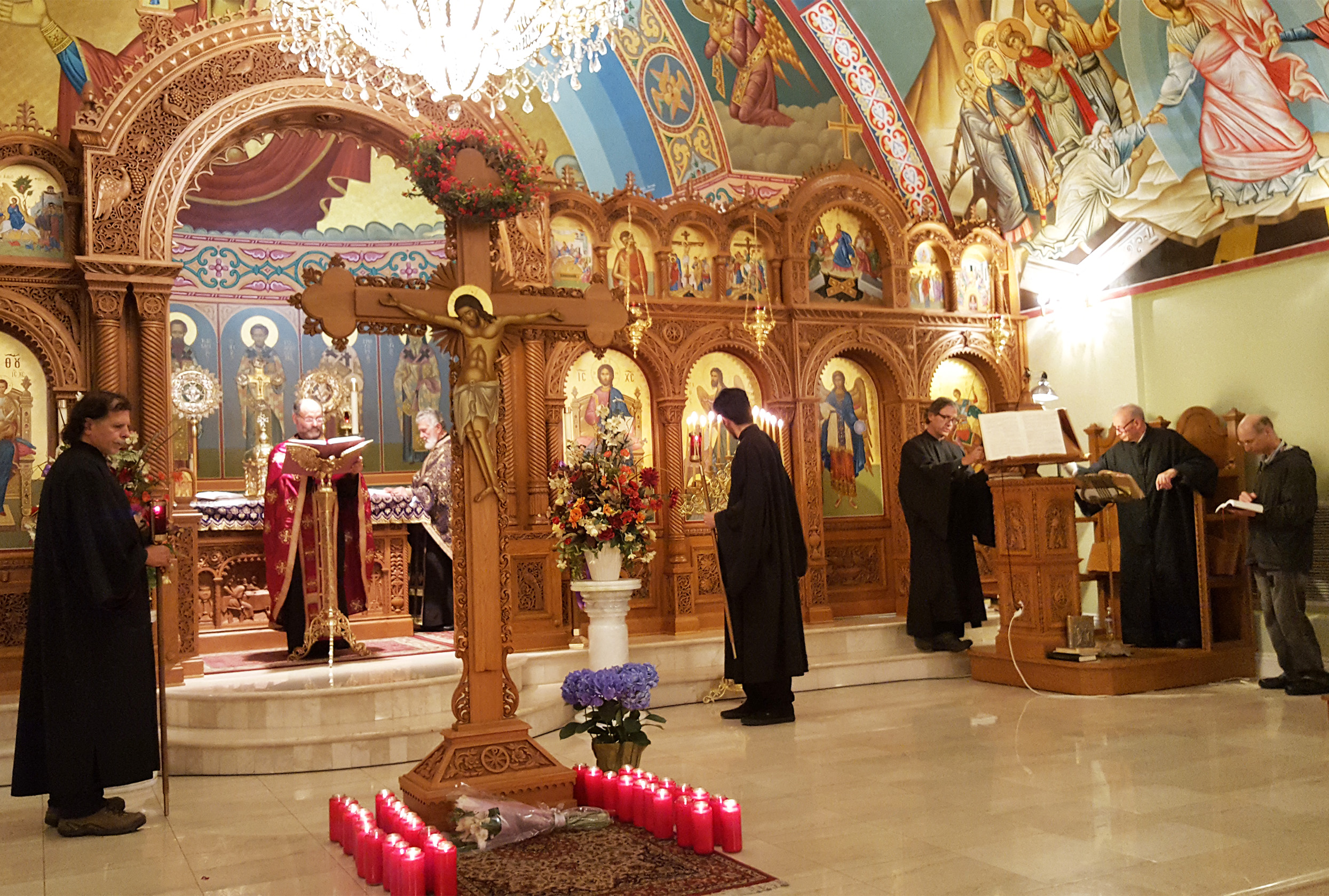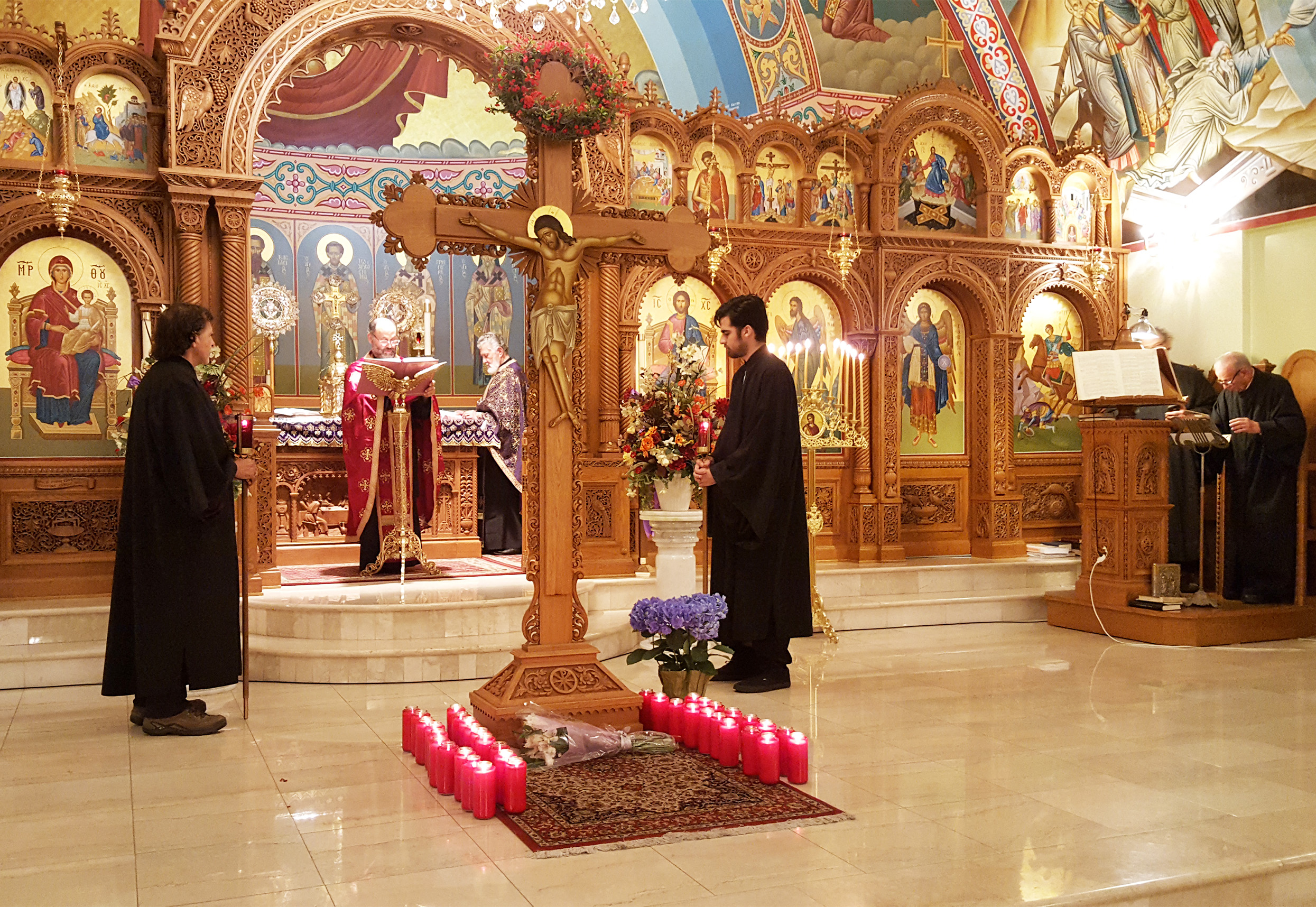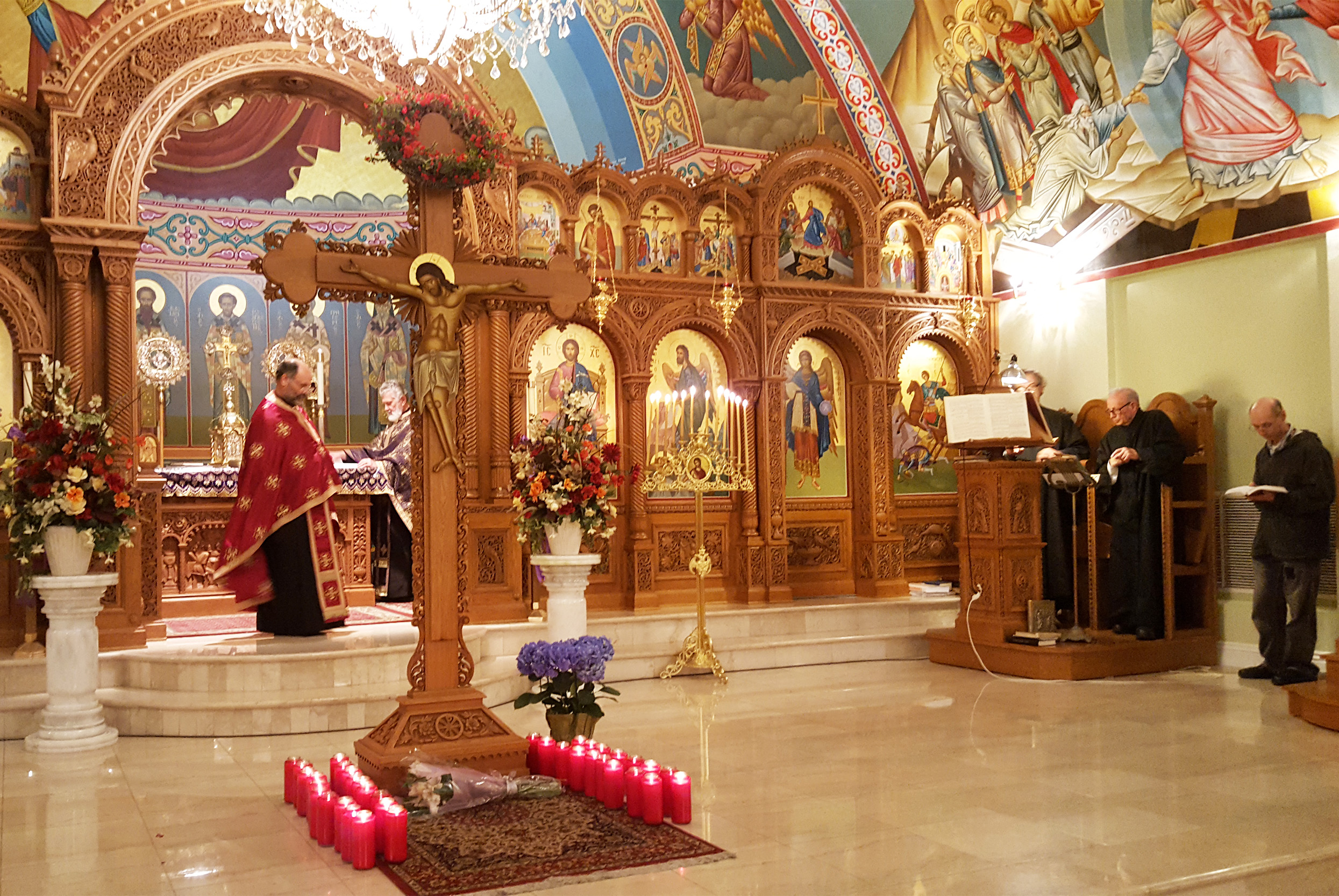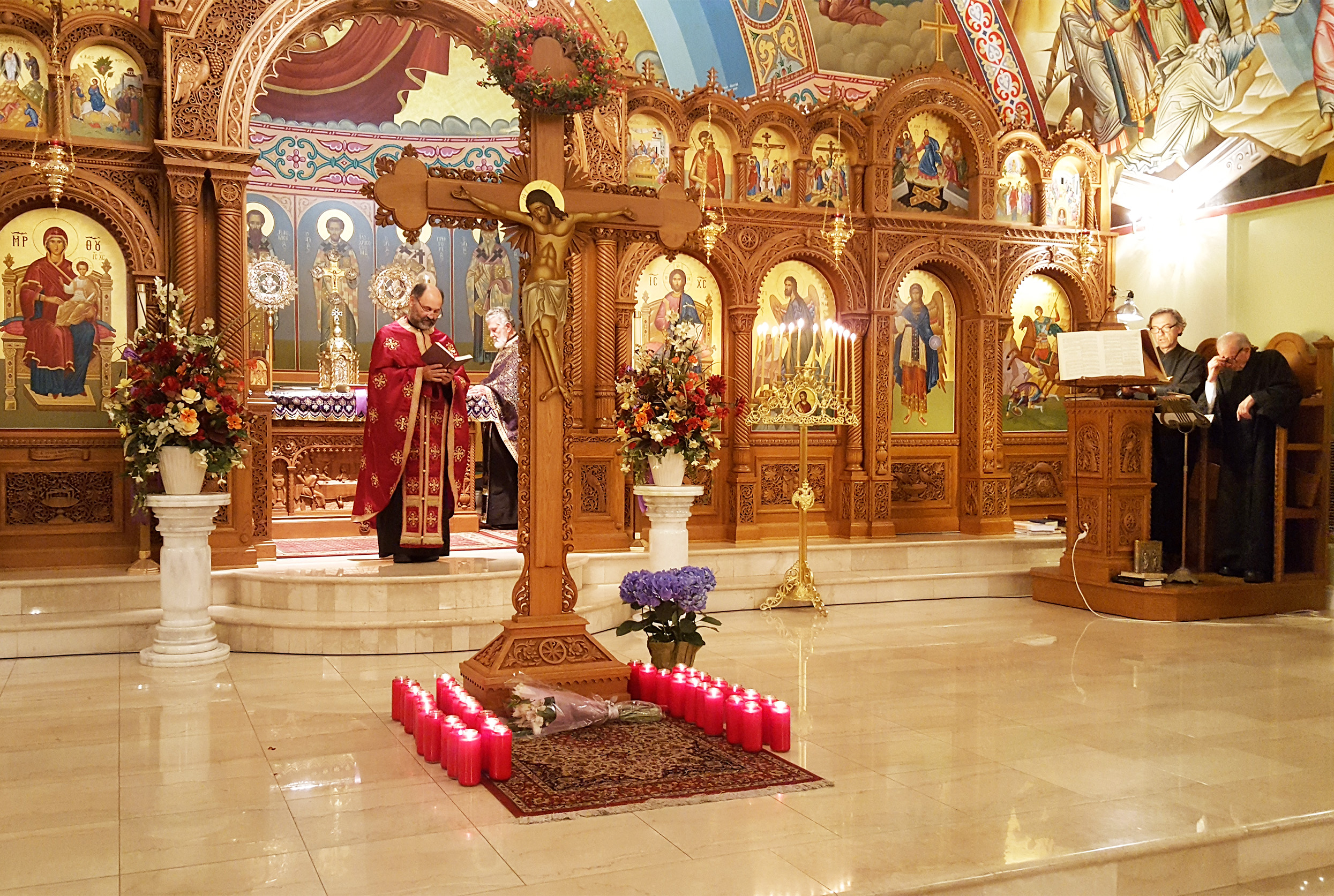|
Holy Thursday
"Do this in remembrance of Me..."
|

|
Great Holy Thursday Morning
The Divine Liturgy of St. Basil
is officiated on this day. The readings are: 2 Cor. 11:23-32; Matt.
26:2-28; John 13:3-17; Matt. 26:21-39; Luke 22:43-44; Matt. 26:40-75;
Matt. 27:1-2. During this Liturgy, the priest prepares the "Amnos," the Holy Communion, which is kept
throughout the whole year to be given the faithful in times of
sickness. The Body and Blood of Christ is present in the Church during
the entire year and throughout the ages. On this day, with greater
feeling than ever, Christians come for Holy Communion singing:
"Receive me Today, O Son of God, as a partaker of Thy Mystic
Feast; for I will not speak of the Mystery to Thine enemies, I will not
kiss Thee as did Judas, but as the thief I will confess Thee. Lord,
remember me when I comest to Thy
Kingdom."
On Thursday morning of
the Holy Week four events are commemorated: the washing of the
disciples' feet, the institution of the Sacrament of the Holy Eucharist
at the Last Supper, the agony in the garden of Gethsemane, and the
betrayal of Christ by Judas.
The Institution of the Eucharist
At the Mystical Supper in the Upper Room, Jesus
gave radically new meaning to the food and drink of the Sacred Meal. He
identified himself with bread and wine.
“And as they were eating,
Jesus took bread, blessed and broke it, and gave it to the disciples
and said, “Take, eat; this is My body. Then He took the cup, and gave
thanks, and gave it to them, saying, “Drink from it, all of you. For
this is My blood of the new covenant, which is shed for many for the
remission of sins.” (Matthew 26:26-28)
The Washing of the Feet
The events initiated by Jesus at
the Mystical. Supper were profoundly significant. By teaching and
giving the disciples His final instructions and praying for them as
well, He revealed again His divine Sonship
and authority. By establishing the Eucharist, He enshrines to
perfection God's most intimate purposes for our salvation, offering
Himself as Communion and life. By washing the feet of His disciples, He
summarized the meaning of His ministry, manifested His perfect love and
revealed His profound humility. (John 13:2-17)
|
Prayer in the
Garden
The moving events in the Garden of Gethsemane
dramatically and poignantly disclosed the human nature of Christ. The
sacrifice He was to endure for the salvation of the world was imminent.
Death, with all its brutal force and fury, stared directly at Him. Its
terrible burden and fear - the calamitous results of the ancestral sin -
caused Him intense sorrow and pain (Hebrews 5:7). Instinctively, as man
He sought to escape it. He found Himself in a moment of decision. In His
agony, He prayed to His Father, "Abba, Father, all things are
possible to thee; remove this cup from me; yet not what I will, but what
thou wilt" (Mark 14:36).
The Betrayal
Judas betrayed Christ with a kiss, the sign of
friendship and love. The betrayal and crucifixion of Christ carried the
ancestral sin to its extreme limits. In these two acts the rebellion
against God reached its maximum capacity. The seduction of man in
paradise culminated in the death of God in the flesh. To be victorious
evil must quench the light and discredit the good. In the end, however,
it shows itself to be a lie, an absurdity and sheer madness. The death
and resurrection of Christ rendered evil powerless.
Christ is the central figure at the table. Saint John
the Beloved [Evangelist, Theologian] is seated at Christ's right; as the
youngest of the disciples he is depicted as beardless. Judas Iscariot the
Betrayer is the third figure from Christ's left; he is depicted dipping
into the dish (Matthew 26:20-25). Saint John the Beloved receives in his
left hand a piece of the Body of Christ; another morsel is on the table
before Christ. The chalice containing the Precious Blood of Christ is in
His Left hand.
Great Holy Thursday Evening
On Thursday evening of the Holy Week, the Holy
Passion of our Lord Jesus Christ is commemorated. In this service, we
commemorate the undeserved suffering of Jesus Christ, endured for our
sake, so that we might be reconciled anew to God our Father. The Gospel
readings witness for us the betrayal and arrest of Jesus, his trial and
conviction, and finally his torture, crucifixion and death at the hands
of a sinful humanity. This evening's service also includes the procession
representing Christ carrying His own cross along the Via Dolorosa, and
ends when we see before us the King of Glory crucified.
|





